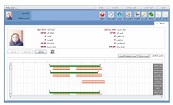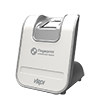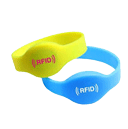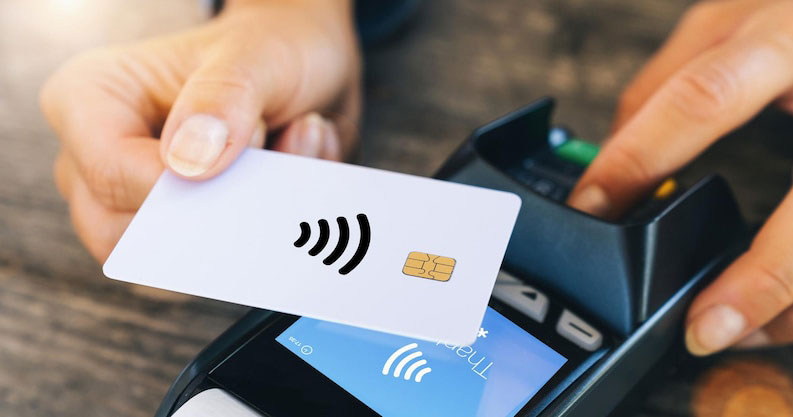Welcome to the future of payment! Gone are the days of fumbling for cash or swiping your credit card. The next wave of payment technology is here, and it's called RFID contactless cards. These innovative, small cards are equipped with a tiny chip that allows for seamless and secure transactions with just a tap. Imagine being able to pay for your morning coffee, groceries, or even your bus fare with a simple flick of your wrist. The convenience and speed of RFID contactless cards are revolutionizing the way we make purchases. But what exactly does the future hold for this technology? In this article, we will explore the potential of RFID contactless cards and how they are set to shape the future of payment. Get ready to unlock the power of RFID and take a glimpse into the exciting world of contactless transactions.
Table of contents
- How RFID contactless cards work<
- Benefits of RFID contactless cards
- Current applications of RFID contactless cards
- The future of RFID contactless cards
- Potential challenges and concerns
- Industries that will be impacted by RFID contactless cards
- Advancements in RFID technology
- Implementing RFID contactless cards in businesses
- Conclusion
How RFID contactless cards work
RFID, or Radio Frequency Identification, is a technology that uses electromagnetic fields to automatically identify and track tags attached to objects. RFID contactless cards work by utilizing this technology in a compact and convenient form. The cards are embedded with a small chip that contains information about the cardholder and their account. When the card is brought into close proximity with an RFID reader, the chip emits a signal that is picked up by the reader. This signal contains the necessary information for the transaction to take place, such as the cardholder's account details and the amount to be paid. The reader then processes the information and completes the transaction, all within a matter of seconds. The beauty of RFID contactless cards lies in their simplicity and convenience. No need to insert the card or enter a PIN; just a quick tap and you're done. It's a hassle-free way to make payments that saves time and eliminates the need for physical contact.
Benefits of RFID contactless cards
RFID contactless cards offer a myriad of benefits that make them an attractive payment option for consumers and businesses alike. Firstly, the speed and convenience of contactless transactions are unparalleled. With just a tap, payments can be made in an instant, allowing for faster checkout times and reducing queues at busy stores. This not only improves the customer experience but also benefits businesses by increasing efficiency and throughput. Secondly, RFID contactless cards are extremely secure. The use of encryption technology ensures that the information transmitted between the card and the reader is encrypted and protected from unauthorized access. Additionally, the short-range nature of the technology means that the card needs to be in close proximity to the reader for a transaction to occur, minimizing the risk of interception. Lastly, RFID contactless cards are versatile and can be used in a wide range of applications, from retail and transportation to healthcare and access control. This versatility makes them a practical choice for both consumers and businesses.
Current applications of RFID contactless cards
RFID contactless cards have already made their mark in various industries and are being used in a multitude of applications. In the retail sector, they have become a popular payment method, with many stores now accepting contactless payments. From small businesses to large retailers, contactless transactions are becoming the norm, offering customers a quick and hassle-free way to pay. In the transportation industry, RFID contactless cards are being used for fare collection systems in buses, trains, and subways. Commuters can simply tap their cards on the reader as they board the vehicle, eliminating the need for physical tickets or cash. This not only speeds up the boarding process but also reduces the risk of counterfeit tickets. In the healthcare sector, RFID contactless cards are being used for patient identification and access control. By incorporating
RFID Technology
into hospital ID cards, healthcare providers can streamline patient registration, improve security, and enhance patient safety. These are just a few examples of the current applications of RFID contactless cards, and the possibilities are endless.
The future of RFID contactless cards
The future of RFID contactless cards is bright and filled with exciting possibilities. As technology continues to advance, we can expect to see even more widespread adoption of contactless payments. One area that holds great promise is the integration of RFID contactless cards with mobile devices. With the increasing popularity of mobile payment apps, it is only natural that RFID contactless cards will find their way into smartphones and smartwatches. Imagine being able to make payments simply by tapping your phone on a reader, without the need for a physical card. This would further enhance the convenience and versatility of contactless transactions. Another area of potential growth is the expansion of RFID contactless cards into new industries and applications. As businesses and organizations discover the benefits of contactless technology, we can expect to see its adoption in areas such as event ticketing, loyalty programs, and even personal identification. The future of RFID contactless cards is not limited to payments alone; it is a technology that has the potential to revolutionize various aspects of our daily lives.
Potential challenges and concerns
While the future of RFID contactless cards looks promising, there are also challenges and concerns that need to be addressed. One of the main concerns is security. As with any technology that deals with sensitive information, there is always the risk of data breaches and unauthorized access. It is crucial for card issuers and businesses to implement robust security measures to protect the privacy and integrity of customer data. This includes encryption, tokenization, and regular security audits. Another challenge is the interoperability of RFID contactless cards. With different card issuers and payment networks using their own proprietary systems, it can be difficult for consumers to use their cards across different merchants and platforms. Efforts are being made to standardize the technology and create a seamless payment experience for users. Lastly, there is the issue of consumer adoption. While contactless payments are gaining popularity, there are still individuals who are hesitant to embrace the technology. Education and awareness campaigns can help address this issue and encourage more people to use RFID contactless cards.
Industries that will be impacted by RFID contactless cards
RFID contactless cards have the potential to impact a wide range of industries. In the retail sector, the adoption of contactless payments is expected to continue to grow, with more stores and businesses accepting contactless transactions. This not only benefits consumers by providing them with a convenient payment option but also helps businesses streamline their operations and improve customer satisfaction. In the transportation industry, RFID contactless cards are set to revolutionize fare collection systems. By replacing traditional ticketing methods with contactless technology, transportation providers can reduce costs, improve efficiency, and enhance the overall passenger experience. In the healthcare sector, RFID contactless cards have the potential to improve patient identification and access control, leading to greater efficiency and patient safety. Other industries that will be impacted by RFID contactless cards include hospitality, events, and access control.
Advancements in RFID technology
As with any technology, RFID is constantly evolving and improving. Advancements in RFID technology are making contactless cards even more secure, versatile, and efficient. One area of advancement is the miniaturization of RFID chips. As the technology becomes smaller and more compact, it can be incorporated into a wider range of devices, such as wearables and IoT devices. This opens up new possibilities for contactless transactions and expands the reach of RFID contactless cards. Another area of advancement is the improvement of read range and speed. By increasing the range at which RFID readers can detect contactless cards and speeding up the transaction process, the overall user experience is enhanced. Additionally, advancements in encryption and authentication protocols are making RFID contactless cards even more secure, protecting both the cardholder's data and the integrity of the transaction. These advancements in RFID technology will continue to drive the adoption of contactless payments and shape the future of payment.
Implementing RFID contactless cards in businesses
For businesses looking to implement RFID contactless cards, there are a few key considerations to keep in mind. Firstly, it is important to choose a reliable card issuer and payment network that can provide the necessary infrastructure and support. This includes the provision of secure card readers, backend systems for processing transactions, and customer support. Secondly, businesses need to ensure that their existing POS systems and infrastructure are compatible with contactless technology. This may require upgrades or replacements of hardware and software components. Additionally, staff training and education are essential to ensure smooth adoption and usage of contactless payments. Finally, businesses should consider the benefits of integrating contactless payments with loyalty programs and other customer engagement initiatives. By leveraging the power of RFID contactless cards, businesses can not only streamline their payment processes but also enhance customer loyalty and satisfaction.
Conclusion
The future of payment is here, and it is being shaped by the power of RFID contactless cards. These small but mighty cards are revolutionizing the way we make purchases, offering speed, convenience, and security like never before. From retail and transportation to healthcare and access control, RFID contactless cards are finding their way into various industries and applications. As technology continues to advance, we can expect to see even more exciting developments in the world of contactless payments. However, it is important to address the challenges and concerns surrounding the technology, such as security and interoperability. With the right measures in place, RFID contactless cards have the potential to transform the way we pay and create a future where transactions are seamless, secure, and effortless. So, get ready to tap into the future of payment and unlock the power of RFID contactless cards.







































































